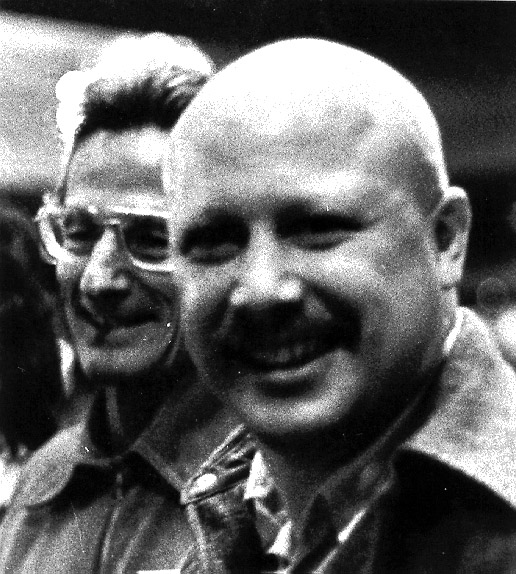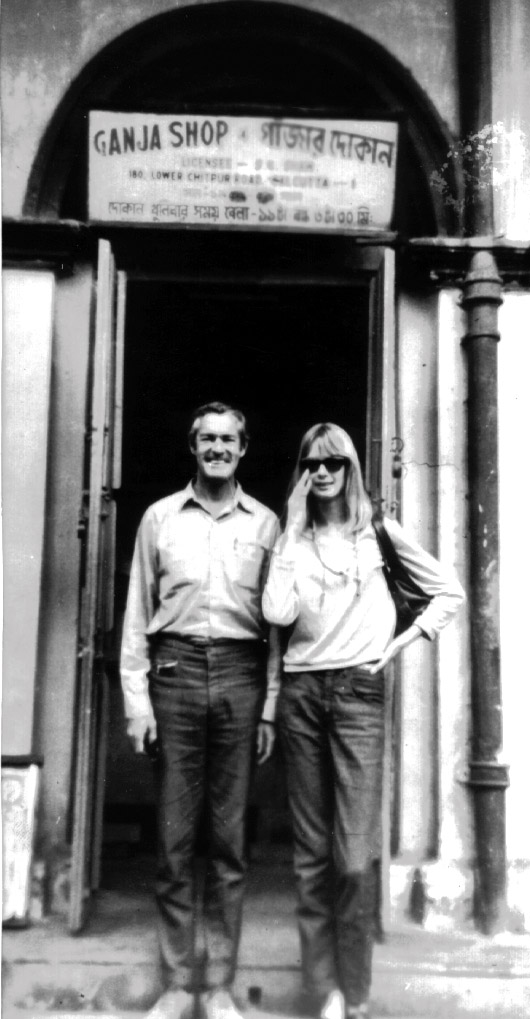
John Cunningham Lilly, M.D.
A constant subject for discussions with John and Toni Lilly was the general effect of transitioning between quantum and newtonian experiential data.
What I mean is, the transition was always rough. John spent a month at my house in Crestline recovering from one particularly difficult transition, and it gets complicated, so we were always looking for things that might assuage the transitionary effects.
Defining the Problem:
Quantum Domain: Governed by the Schrödinger Equation:
iℏ∂ψ∂t=H^ψ,i\hbar \frac{\partial \psi}{\partial t} = \hat{H} \psi,
where ψ\psi is the wavefunction, and H^\hat{H} is the Hamiltonian.
Classical Domain: Governed by Newton’s equations:
F=md2xdt2.F = m \frac{d^2x}{dt^2}.
We want F(x,t)F(x, t) to interpolate between these two, where:
- At small xx: QM dominates (F(x,t)∼ψ(x,t)F(x, t) \sim \psi(x, t)).
- At large xx: CM dominates (F(x,t)∼x(t)F(x, t) \sim x(t)).
Analyze Phase Factor ϕ(x,t)\phi(x, t)
The phase factor is defined as:
ϕ(x,t)=S(x,t)ℏ,\phi(x, t) = \frac{S(x, t)}{\hbar},
where S(x,t)S(x, t) is the classical action:
S(x,t)=∫L dt,L=T−V,S(x, t) = \int L \, dt, \quad L = T – V,
and T,VT, V are the kinetic and potential energies, respectively.
- Small scales (quantum): Action S(x,t)S(x, t) is small compared to ℏ\hbar, so:eiϕ(x,t)∼eiS(x,t)/ℏ.e^{i \phi(x, t)} \sim e^{i S(x, t)/\hbar}.This is the Feynman path integral factor in QM.
- Large scales (classical): Action S(x,t)S(x, t) dominates over ℏ\hbar, leading to:eiϕ(x,t)→1.e^{i \phi(x, t)} \to 1.This recovers deterministic trajectories.
Analyze Coupling Factor C(x,t)C(x, t)
Proposed:
C(x,t)=1−λx+ϵ.C(x, t) = 1 – \frac{\lambda}{x + \epsilon}.
- Small scales (x→0x \to 0):C(x,t)→1−λϵ.C(x, t) \to 1 – \frac{\lambda}{\epsilon}.Quantum effects dominate, as λ/ϵ\lambda/\epsilon emphasizes small-scale interactions.
- Large scales (x→∞x \to \infty):C(x,t)→1.C(x, t) \to 1.Classical effects dominate, with no quantum correction.
Adding decoherence (e.g., environmental effects):
C(x,t)=e−γt⋅(1−λx+ϵ).C(x, t) = e^{-\gamma t} \cdot \left(1 – \frac{\lambda}{x + \epsilon}\right).
Here, the term e−γte^{-\gamma t} suppresses quantum effects over time, aligning with classical predictions.
Combining the Terms
The full coupling formula:
F(x,t)=eiϕ(x,t)⋅(1−λx+ϵ).F(x, t) = e^{i \phi(x, t)} \cdot \left(1 – \frac{\lambda}{x + \epsilon}\right).
- Quantum Limit (x→0x \to 0):**
- Phase: eiS(x,t)/ℏe^{i S(x, t)/\hbar} introduces interference and uncertainty.
- Coupling: C(x,t)∼1−λ/ϵC(x, t) \sim 1 – \lambda/\epsilon, ensuring QM corrections dominate.
- Classical Limit (x→∞x \to \infty):**
- Phase: eiS(x,t)/ℏ→1e^{i S(x, t)/\hbar} \to 1, removing interference terms.
- Coupling: C(x,t)→1C(x, t) \to 1, recovering Newtonian motion.
Proof of Smooth Transition
To ensure the transition is smooth, we look at continuity and differentiability of F(x,t)F(x, t):
- F(x,t)F(x, t) is continuous for all x>0x > 0, as C(x,t)C(x, t) and eiϕ(x,t)e^{i \phi(x, t)} are both smooth.
- F(x,t)F(x, t) has continuous derivatives for all x>0x > 0, as:
- ∂xeiϕ(x,t)=iℏ∂xS(x,t)eiϕ(x,t)\partial_x e^{i \phi(x, t)} = \frac{i}{\hbar} \partial_x S(x, t) e^{i \phi(x, t)},
- ∂xC(x,t)=λ(x+ϵ)2\partial_x C(x, t) = \frac{\lambda}{(x + \epsilon)^2}.
This guarantees a well-behaved transition from QM to CM.
Validate with the Correspondence Principle
The Correspondence Principle states QM and CM must agree in the classical limit (ℏ→0\hbar \to 0).
- As ℏ→0\hbar \to 0:
- Phase factor: eiϕ(x,t)→1e^{i \phi(x, t)} \to 1.
- Coupling factor: C(x,t)→1C(x, t) \to 1.
Thus:
F(x,t)→1,F(x, t) \to 1,
recovering deterministic CM behavior.
To ensure the transition is smooth, we look at continuity and differentiability of F(x,t)F(x, t):
- F(x,t)F(x, t) is continuous for all x>0x > 0, as C(x,t)C(x, t) and eiϕ(x,t)e^{i \phi(x, t)} are both smooth.
- F(x,t)F(x, t) has continuous derivatives for all x>0x > 0, as:
- ∂xeiϕ(x,t)=iℏ∂xS(x,t)eiϕ(x,t)\partial_x e^{i \phi(x, t)} = \frac{i}{\hbar} \partial_x S(x, t) e^{i \phi(x, t)},
- ∂xC(x,t)=λ(x+ϵ)2\partial_x C(x, t) = \frac{\lambda}{(x + \epsilon)^2}.
This guarantees a well-behaved transition from QM to CM.
=====================================================================

The Coupling Song
Verse 1
In the quantum world, where particles play,
“I times h-bar, d-psi by d-t equals H psi” all day.
The phase factor whispers, “S divided by h-bar,”
Guides the tiny motions, like a cosmic guitar.
“I times h-bar, d-psi by d-t equals H psi!”
Chorus
“F of x and t is e to the i-phi,
Times one minus lambda, over x plus epsilon high!”
From quantum to Newton, it’s a cosmic spin,
Bridging the worlds, let the harmony begin.
“F of x and t is e to the i-phi,
Times one minus lambda, over x plus epsilon high!”
Verse 2
When action is small, “S divided by h-bar,” we see,
The quantum beats pulse with uncertainty.
But as x grows larger, it fades away,
Classical rules guide the dance of the day.
“S divided by h-bar is the action we hear!”
Bridge
The coupling factor, “C of x and t,” softly decays,
“E to the minus gamma t, times one minus lambda fades.”
Smooth as a wave, the transition is clear,
A formula that sings for the engineer.
“E to the minus gamma t, times one minus lambda fades!”
Verse 3
Now listen close, as the proof takes the stage,
From small scales to large, through the math we engage.
“One minus lambda, over x plus epsilon flows,”
Blending two worlds as the coupling grows.
“One minus lambda, over x plus epsilon flows!”
Chorus (repeat)
“F of x and t is e to the i-phi,
Times one minus lambda, over x plus epsilon high!”
From quantum to Newton, it’s a cosmic spin,
Bridging the worlds, let the harmony begin.
“F of x and t is e to the i-phi,
Times one minus lambda, over x plus epsilon high!”
Outro
So sing the math, let the cosmos align,
Particles and planets in rhythmic time.
Through music and formula, harmony’s found,
The song of physics, a universal sound.
==============================================================
I think there is no better way to communicate an idea than through the medium of song, and here’s my offering — a song based on the material above.
There, wasn’t that better than sitting in a classroom trying to absorb the headspaces of Feynmann, Hook, Tyson and Cox?
Something I just found out this morning — my videos that are vertical and less than 3 minutes long automatically go under the heading “shorts”.
Look on my channel under “videos” and you’ll see one grouping of videos — look under “shorts” and you’ll see an entirely different group of videos. Who knew???
====================================================================

Yep, you guessed it — time to board the Bardo bus for our daily video tour!!!
Hope you enjoyed the journey.
See You At The Top!!!
gorby

